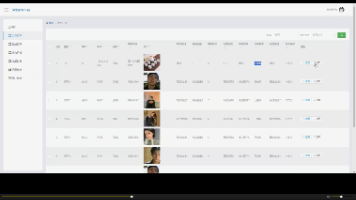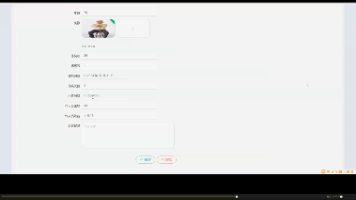8张L20显卡部署DeepSeekV3完整流程文档
本文详细介绍了在8张NVIDIA L20显卡服务器上部署DeepSeek-V3大模型的完整流程。主要内容包括:硬件环境要求(8张16GB显存L20显卡、24核以上CPU、128GB内存等)、软件环境准备(Ubuntu 22.04、Docker、CUDA等)、从魔塔社区下载模型的两种方法、三种推理引擎(vLLM/SGLang/TGI)的选择与配置,以及详细的Docker Compose部署方案。文档
# 8张L20显卡部署DeepSeekV3完整流程文档
## 目录
1. [硬件环境要求](#硬件环境要求)
2. [软件环境准备](#软件环境准备)
3. [从魔塔社区下载DeepSeekV3模型](#从魔塔社区下载deepseekv3模型)
4. [选择推理引擎镜像](#选择推理引擎镜像)
5. [Docker Compose配置](#docker-compose配置)
6. [启动和验证服务](#启动和验证服务)
7. [常见问题及解决方案](#常见问题及解决方案)
8. [性能优化建议](#性能优化建议)
9. [API使用示例](#api使用示例)
---
## 硬件环境要求
### 最低配置
- **GPU**: 8张NVIDIA L20显卡(每张16GB显存)
- **CPU**: Intel Xeon Gold 6248R 或 AMD EPYC 7543P(24核心以上)
- **内存**: 128GB DDR4 ECC内存
- **存储**: 2TB NVMe SSD(用于模型存储)
- **网络**: 千兆以太网
### 推荐配置
- **GPU**: 8张NVIDIA L20显卡
- **CPU**: Intel Xeon Gold 6348 或 AMD EPYC 7763(32核心以上)
- **内存**: 256GB DDR4 ECC内存
- **存储**: 4TB NVMe SSD RAID0
- **网络**: 万兆以太网
---
## 软件环境准备
### 1. 操作系统安装
```bash
# 推荐使用Ubuntu 22.04 LTS
sudo apt update && sudo apt upgrade -y
```
### 2. NVIDIA驱动安装
```bash
# 检查GPU状态
nvidia-smi
# 如果未安装驱动,执行以下命令
sudo apt install nvidia-driver-535 -y
sudo reboot
```
### 3. Docker和NVIDIA Container Toolkit安装
```bash
# 安装Docker
curl -fsSL https://get.docker.com -o get-docker.sh
sudo sh get-docker.sh
sudo usermod -aG docker $USER
# 安装NVIDIA Container Toolkit
distribution=$(. /etc/os-release;echo $ID$VERSION_ID)
curl -s -L https://nvidia.github.io/nvidia-docker/gpgkey | sudo apt-key add -
curl -s -L https://nvidia.github.io/nvidia-docker/$distribution/nvidia-docker.list | sudo tee /etc/apt/sources.list.d/nvidia-docker.list
sudo apt-get update && sudo apt-get install -y nvidia-container-toolkit
sudo systemctl restart docker
# 验证NVIDIA Docker支持
docker run --rm --gpus all nvidia/cuda:11.8-base-ubuntu22.04 nvidia-smi
```
### 4. Docker Compose安装
```bash
sudo curl -L "https://github.com/docker/compose/releases/download/v2.20.0/docker-compose-$(uname -s)-$(uname -m)" -o /usr/local/bin/docker-compose
sudo chmod +x /usr/local/bin/docker-compose
```
---
## 从魔塔社区下载DeepSeekV3模型
### 方法一:使用Git克隆(推荐)
```bash
# 安装Git LFS
sudo apt install git-lfs -y
git lfs install
# 创建模型存储目录
sudo mkdir -p /data/models
sudo chown $USER:$USER /data/models
cd /data/models
# 使用tmux防止下载中断
tmux new -s deepseek_download
# 在tmux会话中执行
git clone https://www.modelscope.cn/deepseek-ai/DeepSeek-V3.git
cd DeepSeek-V3
git lfs pull
# 如果会话中断,使用以下命令恢复
# tmux attach -t deepseek_download
```
### 方法二:使用ModelScope CLI
```bash
# 安装ModelScope
pip install modelscope
# 下载模型
from modelscope import snapshot_download
model_dir = snapshot_download('deepseek-ai/DeepSeek-V3', cache_dir='/data/models')
```
### 验证模型下载
```bash
# 检查模型文件完整性
ls -la /data/models/DeepSeek-V3/
# 应该看到以下文件:
# - config.json
# - tokenizer.json
# - tokenizer_config.json
# - pytorch_model.bin 或 model-*.safetensors
```
---
## 选择推理引擎镜像
### 推荐方案一:vLLM(高性能)
```bash
# 拉取vLLM镜像
docker pull vllm/vllm-openai:latest
```
**优势**:
- 高性能推理
- 支持张量并行
- OpenAI API兼容
- 内存优化
### 推荐方案二:SGLang(稳定)
```bash
# 拉取SGLang镜像
docker pull lmsysorg/sglang:latest
```
**优势**:
- 稳定性好
- 支持多GPU
- 易于配置
### 推荐方案三:Text Generation Inference(TGI)
```bash
# 拉取TGI镜像
docker pull ghcr.io/huggingface/text-generation-inference:latest
```
**优势**:
- Hugging Face官方支持
- 生产环境稳定
- 支持多种量化
---
## Docker Compose配置
### 方案一:vLLM配置(推荐)
创建 `docker-compose.yml` 文件:
```yaml
version: '3.9'
services:
deepseek-v3:
image: vllm/vllm-openai:latest
container_name: deepseek-v3-service
restart: unless-stopped
ports:
- "8000:8000"
volumes:
- /data/models:/models:ro
- /tmp/.X11-unix:/tmp/.X11-unix:rw
environment:
- CUDA_VISIBLE_DEVICES=0,1,2,3,4,5,6,7
- HF_TOKEN=${HF_TOKEN}
command: >
--model /models/DeepSeek-V3
--tensor-parallel-size 8
--max-num-seqs 16
--max-model-len 8192
--max-num-batched-tokens 32768
--gpu-memory-utilization 0.9
--trust-remote-code
--host 0.0.0.0
--port 8000
--served-model-name DeepSeek-V3
deploy:
resources:
reservations:
devices:
- driver: nvidia
device_ids: ["0", "1", "2", "3", "4", "5", "6", "7"]
capabilities: [gpu]
shm_size: 16gb
ulimits:
memlock: -1
stack: 67108864
ipc: host
healthcheck:
test: ["CMD", "curl", "-f", "http://localhost:8000/health"]
interval: 30s
timeout: 10s
retries: 3
start_period: 60s
```
### 方案二:SGLang配置
```yaml
version: '3.9'
services:
deepseek-v3-sglang:
image: lmsysorg/sglang:latest
container_name: deepseek-v3-sglang
restart: unless-stopped
ports:
- "30000:30000"
volumes:
- /data/models:/models:ro
environment:
- CUDA_VISIBLE_DEVICES=0,1,2,3,4,5,6,7
- HF_TOKEN=${HF_TOKEN}
entrypoint: python3 -m sglang.launch_server
command: >
--model-path /models/DeepSeek-V3
--host 0.0.0.0
--port 30000
--tensor-parallel-size 8
--trust-remote-code
deploy:
resources:
reservations:
devices:
- driver: nvidia
device_ids: ["0", "1", "2", "3", "4", "5", "6", "7"]
capabilities: [gpu]
shm_size: 16gb
ulimits:
memlock: -1
stack: 67108864
ipc: host
```
### 方案三:TGI配置
```yaml
version: '3.9'
services:
deepseek-v3-tgi:
image: ghcr.io/huggingface/text-generation-inference:latest
container_name: deepseek-v3-tgi
restart: unless-stopped
ports:
- "8080:80"
volumes:
- /data/models:/data:ro
environment:
- CUDA_VISIBLE_DEVICES=0,1,2,3,4,5,6,7
- HUGGING_FACE_HUB_TOKEN=${HF_TOKEN}
command: >
--model-id /data/DeepSeek-V3
--tensor-parallelism 8
--max-total-tokens 32768
--max-input-length 8192
--max-batch-total-tokens 32768
--max-batch-prefill-tokens 16384
--trust-remote-code
deploy:
resources:
reservations:
devices:
- driver: nvidia
device_ids: ["0", "1", "2", "3", "4", "5", "6", "7"]
capabilities: [gpu]
shm_size: 16gb
```
### 环境变量配置
创建 `.env` 文件:
```bash
# Hugging Face Token(可选,用于下载模型)
HF_TOKEN=your_huggingface_token_here
```
---
## 启动和验证服务
### 1. 启动服务
```bash
# 进入项目目录
cd /path/to/your/project
# 启动服务(后台运行)
docker-compose up -d
# 查看启动日志
docker-compose logs -f
```
### 2. 验证服务状态
```bash
# 检查容器状态
docker-compose ps
# 检查GPU使用情况
nvidia-smi
# 测试API接口
curl http://localhost:8000/health
# 或
curl http://localhost:8000/v1/models
```
### 3. 性能测试
```bash
# 使用ab工具进行压力测试
ab -n 100 -c 10 -H "Content-Type: application/json" \
-p test_request.json http://localhost:8000/v1/chat/completions
# test_request.json内容:
{
"model": "DeepSeek-V3",
"messages": [{"role": "user", "content": "你好,请介绍一下自己"}],
"max_tokens": 100
}
```
---
## 常见问题及解决方案
### 1. 模型加载失败
**问题现象**:
```
RuntimeError: CUDA out of memory
```
**解决方案**:
```bash
# 方案1:减少GPU内存使用率
# 修改docker-compose.yml中的gpu-memory-utilization参数
--gpu-memory-utilization 0.8
# 方案2:使用模型量化
--quantization awq # 或 --quantization gptq
# 方案3:减少批处理大小
--max-num-seqs 8
--max-num-batched-tokens 16384
```
### 2. 服务启动超时
**问题现象**:
```
Container health check failed
```
**解决方案**:
```bash
# 增加健康检查超时时间
healthcheck:
test: ["CMD", "curl", "-f", "http://localhost:8000/health"]
interval: 60s
timeout: 30s
retries: 5
start_period: 120s
# 检查模型文件完整性
ls -la /data/models/DeepSeek-V3/
```
### 3. GPU利用率低
**问题现象**:
```
GPU使用率低于50%
```
**解决方案**:
```bash
# 增加批处理大小
--max-num-seqs 32
--max-num-batched-tokens 65536
# 调整张量并行参数
--tensor-parallel-size 8
# 启用连续批处理
--enable-chunked-prefill
```
### 4. 内存不足错误
**问题现象**:
```
OutOfMemoryError: CUDA out of memory
```
**解决方案**:
```bash
# 增加共享内存大小
shm_size: 32gb
# 使用CPU卸载
--cpu-offload-gb 20
# 启用内存池
--enable-memory-pool
```
### 5. 网络连接问题
**问题现象**:
```
Connection refused
```
**解决方案**:
```bash
# 检查端口占用
netstat -tlnp | grep 8000
# 修改端口映射
ports:
- "8001:8000" # 使用不同端口
# 检查防火墙设置
sudo ufw allow 8000
```
### 6. 模型文件损坏
**问题现象**:
```
Model loading failed
```
**解决方案**:
```bash
# 重新下载模型
rm -rf /data/models/DeepSeek-V3
git clone https://www.modelscope.cn/deepseek-ai/DeepSeek-V3.git /data/models/DeepSeek-V3
# 验证文件完整性
cd /data/models/DeepSeek-V3
git lfs pull
```
---
## 性能优化建议
### 1. 硬件优化
```bash
# 设置GPU性能模式
sudo nvidia-smi -pm 1
sudo nvidia-smi -ac 1215,1410 # 设置GPU时钟频率
# 优化CPU调度
echo performance | sudo tee /sys/devices/system/cpu/cpu*/cpufreq/scaling_governor
```
### 2. 软件优化
```bash
# 启用NVIDIA持久化模式
sudo nvidia-smi -pm 1
# 设置环境变量
export CUDA_LAUNCH_BLOCKING=0
export CUDA_CACHE_DISABLE=0
export CUDA_CACHE_MAXSIZE=2147483648
```
### 3. Docker优化
```yaml
# 在docker-compose.yml中添加
sysctls:
- net.core.somaxconn=65535
- net.ipv4.tcp_max_syn_backlog=65535
# 设置CPU亲和性
cpuset: "0-31" # 根据CPU核心数调整
```
### 4. 模型优化
```bash
# 使用量化模型
--quantization awq
--quantization gptq
# 启用Flash Attention
--enable-flash-attn
# 使用连续批处理
--enable-chunked-prefill
```
---
## API使用示例
### 1. Python客户端示例
```python
import openai
import requests
import json
# 配置客户端
client = openai.OpenAI(
api_key="your-api-key",
base_url="http://localhost:8000/v1"
)
# 发送请求
def chat_with_deepseek(message):
try:
response = client.chat.completions.create(
model="DeepSeek-V3",
messages=[
{"role": "user", "content": message}
],
max_tokens=1000,
temperature=0.7
)
return response.choices[0].message.content
except Exception as e:
print(f"Error: {e}")
return None
# 使用示例
result = chat_with_deepseek("请介绍一下人工智能的发展历史")
print(result)
```
### 2. curl命令示例
```bash
# 基本聊天请求
curl -X POST "http://localhost:8000/v1/chat/completions" \
-H "Content-Type: application/json" \
-H "Authorization: Bearer your-api-key" \
-d '{
"model": "DeepSeek-V3",
"messages": [
{"role": "user", "content": "你好,请介绍一下自己"}
],
"max_tokens": 100,
"temperature": 0.7
}'
# 流式响应
curl -X POST "http://localhost:8000/v1/chat/completions" \
-H "Content-Type: application/json" \
-H "Authorization: Bearer your-api-key" \
-d '{
"model": "DeepSeek-V3",
"messages": [
{"role": "user", "content": "请写一首关于春天的诗"}
],
"max_tokens": 200,
"stream": true
}'
```
### 3. JavaScript客户端示例
```javascript
const OpenAI = require('openai');
const client = new OpenAI({
apiKey: 'your-api-key',
baseURL: 'http://localhost:8000/v1',
});
async function chatWithDeepSeek(message) {
try {
const response = await client.chat.completions.create({
model: 'DeepSeek-V3',
messages: [
{ role: 'user', content: message }
],
max_tokens: 1000,
temperature: 0.7
});
return response.choices[0].message.content;
} catch (error) {
console.error('Error:', error);
return null;
}
}
// 使用示例
chatWithDeepSeek('请解释一下量子计算的基本原理')
.then(result => console.log(result));
```
---
## 监控和维护
### 1. 系统监控
```bash
# 创建监控脚本
cat > monitor.sh << 'EOF'
#!/bin/bash
while true; do
echo "=== $(date) ==="
echo "GPU Status:"
nvidia-smi --query-gpu=index,name,utilization.gpu,memory.used,memory.total,temperature.gpu --format=csv
echo "Container Status:"
docker-compose ps
echo "API Health:"
curl -s http://localhost:8000/health || echo "API not responding"
echo "================================"
sleep 60
done
EOF
chmod +x monitor.sh
./monitor.sh
```
### 2. 日志管理
```bash
# 设置日志轮转
cat > /etc/logrotate.d/docker-compose << 'EOF'
/var/lib/docker/containers/*/*.log {
daily
rotate 7
compress
delaycompress
missingok
notifempty
create 0644 root root
}
EOF
```
### 3. 自动重启
```bash
# 创建自动重启脚本
cat > restart_service.sh << 'EOF'
#!/bin/bash
if ! curl -f http://localhost:8000/health > /dev/null 2>&1; then
echo "$(date): Service unhealthy, restarting..."
docker-compose restart
sleep 30
if curl -f http://localhost:8000/health > /dev/null 2>&1; then
echo "$(date): Service restarted successfully"
else
echo "$(date): Service restart failed"
fi
fi
EOF
chmod +x restart_service.sh
# 添加到crontab
(crontab -l 2>/dev/null; echo "*/5 * * * * /path/to/restart_service.sh") | crontab -
```
---
## 总结
通过以上步骤,您可以在8张L20显卡的服务器上成功部署DeepSeekV3模型。关键要点:
1. **硬件要求**:确保8张L20显卡正常工作,显存充足
2. **模型下载**:从魔塔社区正确下载完整的模型文件
3. **推理引擎**:选择合适的推理引擎(推荐vLLM)
4. **配置优化**:根据硬件配置调整Docker Compose参数
5. **监控维护**:建立完善的监控和自动恢复机制
建议在生产环境中使用vLLM方案,它提供了最佳的性能和稳定性。如果遇到问题,请参考常见问题解决方案部分,或查看详细的错误日志进行排查。
---
**注意事项**:
- 确保服务器有足够的电源供应(建议2000W以上)
- 定期备份模型文件和配置文件
- 监控GPU温度和功耗,避免过热
- 根据实际使用情况调整批处理大小和并发数
更多推荐
 已为社区贡献1条内容
已为社区贡献1条内容








所有评论(0)